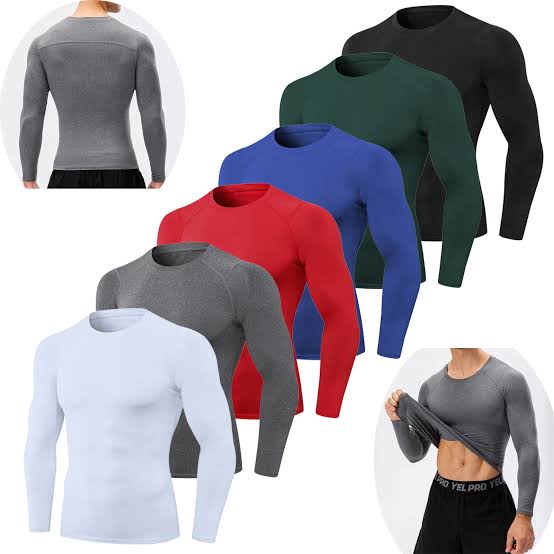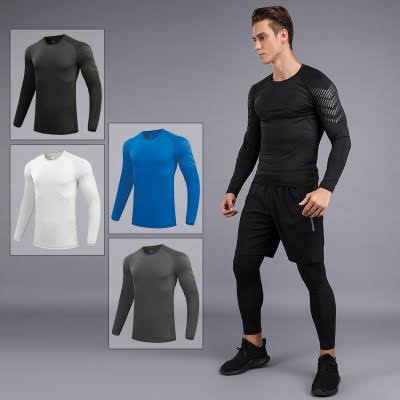The sustainable textiles movement is booming. Now, consumers are aware of how some clothing poses a danger to the ecosystem and human health. With the rising demand for sustainable sportswear, it is essential that you make the switch, or else your sales will reduce.
Hence, we’ve prepared this sustainable activewear fabric choosing guidance to help you navigate your way in choosing the best eco-friendly clothing materials.

Sustainable Textiles: Reducing Harmful Environmental Impacts
Discussed below is an in-depth meaning of what sustainable textiles are, as well as the production process and properties that make them different from unsustainable fabric materials.
What are Sustainable Textiles?
Sustainable textiles, which can also be referred to as eco-friendly fabrics are clothing materials manufactured, used, and disposed of in an environmentally responsible way.
Consumers are increasingly demanding sustainable sportswear that promotes comfortable training, keeping them confident and motivated throughout the workout session.

What Makes Textiles Sustainable?
The major elements that make textiles sustainable are the production process and properties of the textiles. These elements can influence how the textiles react to human health and the ecosystem.
Production Process
The production of sustainable fabric involves using natural fibers, as well as minimizing the consumption of energy, water usage, and harmful chemicals. To do these, here are some measures used:
- Organic and Natural Fibers: Sustainable fabrics for clothing are made with organic and natural fibers like bamboo, cotton, and linen that are grown without synthetic pesticides, fertilizers, or other modifiers.
- Recycled Materials: This has to do with using materials like recycled polyester that are sourced from plastic bottles or industrial waste.
- Energy and Water Management: The production of eco-friendly materials for clothing includes using energy-efficient machinery, and water treatment systems, and improving the production process to reduce waste.
- Mild Dyes and Chemicals: Environmentally friendly fabrics employ the use of natural or mild dyes and chemicals that pose less danger to society. This minimizes water pollution and the release of harmful fluids into the ecosystem.
Fabric Properties
Sustainable textiles possess outstanding properties that contribute to their eco-friendly nature, making them perfect for sportswear. Here are the main properties they possess:
- Breathability
- Moisture-wicking
- Washability and color-fast
- Durability
- Biodegradability
- Recyclability
- Minimal environmental impact
Why Sustainable Development Goals Matter
The effect of using eco-friendly materials for clothing is very important in achieving sustainable development goals, especially for sportswear.
Here are 3 cogent reasons why they matter:

Environmental Benefits
By adopting the use of sustainable fabrics for clothing, pressing global challenges like climate change, pollution, deforestation, and resource depletion can be prevented. Incorporating sustainable practices allows the fashion industry to reduce its ecological footprint, conserve natural resources, minimize waste generation, decrease greenhouse gas emissions, and protect biodiversity. The sustainable development goal is essential to preserving the planet for future generations
Sustainable Development Becomes Fashion’s Future
Consumers are beginning to experience the repercussions of the uncontrolled fashion industry, and as a result, they are becoming more aware of the environmental effects of these procedures. As a result, the market for sustainable textiles is expanding. Due to the growing awareness of the significance of sustainability, there is a strong likelihood that this trend will continue.
Improved Brand Image
Following the knowledge consumers have about sustainable fabric practices, they are more likely to support companies that are doing their best to keep human beings and the planet safe. This results in increased sales and customer loyalty.
Also, it creates opportunities for partnerships with various stakeholders, government bodies, and NGOs, which can further enhance your brand’s image and credibility.
3 Categories of Sustainable Textiles in Sportswear
These are the basic classes of sustainable textiles used in manufacturing sportswear. They are grouped into plant-based, animal-derived, and recycled materials. With this, you will find the recommended most breathable fabrics for sportswear.
Plant-Based Sustainable Textiles Materials
- Recycled Cotton: This is a sustainable alternative to normal cotton material. It is sourced from collecting cotton waste and processing them into new fabrics. Recycled cotton materials are soft, lightweight, water-absorbent, and breathable, making consumers comfortable during workouts and exercises. Common sportswear that is made of recycled cotton are hoodies, sweatpants, T-shirts, and shorts.
- Organic-Linen: This is a natural type of sustainable clothing material that’s obtained from flax plants grown without using any form of modifier or synthetic pesticide. It has breathability and moisture-wicking characteristics, which makes it have a natural cooling effect. Common sportswear made of organic linen is tank tops, T-shirts, jackets, and pants.
- Bamboo: Bamboo is regarded as one of the best sustainable clothing materials that can be used to manufacture sportswear due to its softness, breathability, moisture-wicking, and natural antibacterial properties. Common sportswear made of bamboo are T-shirts, socks, sports bras, and leggings.
Animal-Derived Sustainable Textiles Materials
- Recycled Wool: This is a sustainable alternative to natural wool materials. It is sourced from the processing of consumer wool waste or factory residues. These eco-friendly materials for clothing feature properties like excellent insulation, waterproofing, absorbency, and flame resistance. Common sportswear made of recycled wool is socks and jackets.
- Recycled Silk: Recycled silk has similar features as natural silk materials, such as a soft and flattering sheen feel, high absorbency, strength, and durability. This contributes to its suitability for making sportswear like T-shirts, tank tops, shorts, and hairbands.
Recycled Sustainable Textiles Materials
- Man-Made Cellulosic Fabric: This includes eco-friendly clothing materials like Tencel and Modal that are obtained from wood pulp in sustainably managed forests. They are known for their softness, high absorbency, and comfort. Also, man-made cellulose fabrics have a smooth and luxurious feel on the skin, which makes them ideal for workouts. Common sportswear made of this material are tops, leggings, sports bras, and shorts.
- Recycled Polyester: Recycled polyesters are sustainable clothing materials that are made from the processing of waste plastic bottles or other forms of polyester waste. The processing involves melting the waste into pellets that are then recycled into new polyester fibers. They are lightweight and dry quickly, which makes them perfect for sportswear like T-shirts, leggings, and tracksuits.
- Regenerated Nylon: Also known as recycled nylon, these sustainable fabrics for clothing are derived from pre and post-consumer polyamide wastes, which are gathered, cleaned, and processed into new nylon fibers. Regenerated nylon is lightweight, moisture-resistant, durable, and elastic, making them ideal for sportswear like workout pants, swimwear, and windbreaker apparel used for hiking.
UGA: Sustainable Sportswear Manufacturing
Are you looking for a reliable source for your sportswear needs? UGA is a reputable manufacturer and supplier that uses environmentally friendly fabrics to make quality workout clothing. We offer a wide variety of custom and private-label sportswear for both men and women, including tops, jackets, hoodies, joggers, leggings, tights, pants, etc.

Always Ethical – Eco Options
At UGA, our sustainability is not an empty word. We only make use of eco-friendly clothing materials and production processes to ensure maximum comfort and minimum footprint. Some of our practices include reducing fabric waste by recycling waste fabrics, as well as using recycled packaging. We use FSC-certified paper packaging bags and recycled packaging bags to reduce the use of disposable poly bags. This helps to ensure optimal sustainability.
Low MOQs – Luxe Quality
With a minimum order quantity of 100 pieces, we will provide you with the best sportswear made from quality eco-friendly fabrics. Every stage of our manufacturing process is under strict quality control to ensure there is no flaw. Starting from the raw material acquisition to the packaging stage, a thorough inspection is conducted, making sure your requirements are fulfilled accurately. We set various checkpoints to confirm the sportswear properties.
Conclusion
Sustainable textiles play a big role in empowering sportswear to be more eco-friendly. By including these materials in the manufacturing process, the adverse effect of the fashion industry on the environment can be reduced. Various eco-friendly fabrics with excellent properties, such as breathability, moisture-wicking, quick-drying, and waterproofing are used in the production of high-quality sportswear.
Together with producing a broad range of sportswear, UGA offers several value-added benefits, like professional customization advice, quick sampling, remarkable packaging branding, convenient logistics management, and hassle-free after-sales services. To enjoy all these benefits, you can contact us for an affordable quote.

